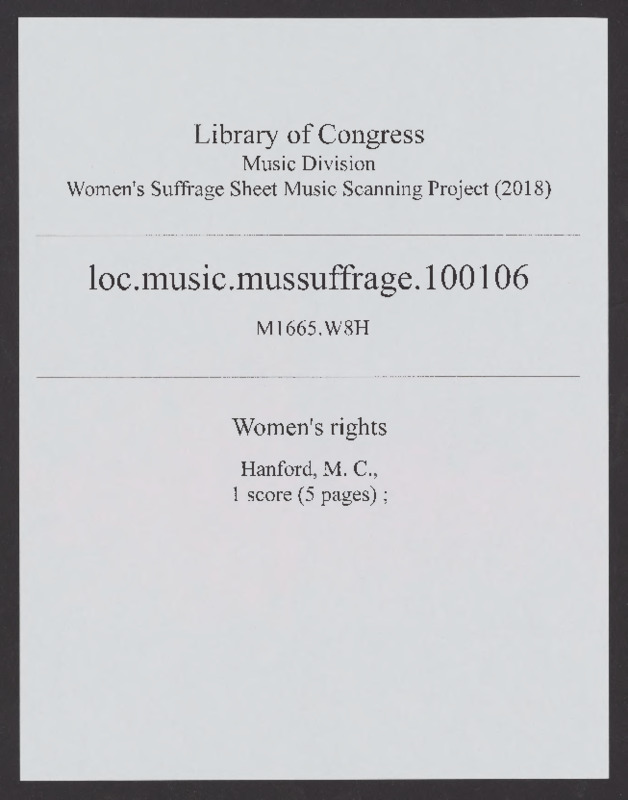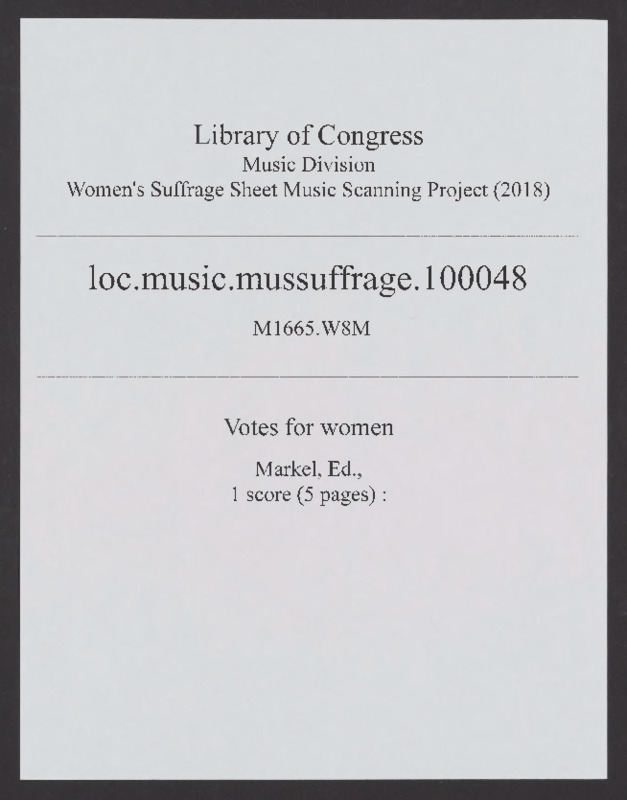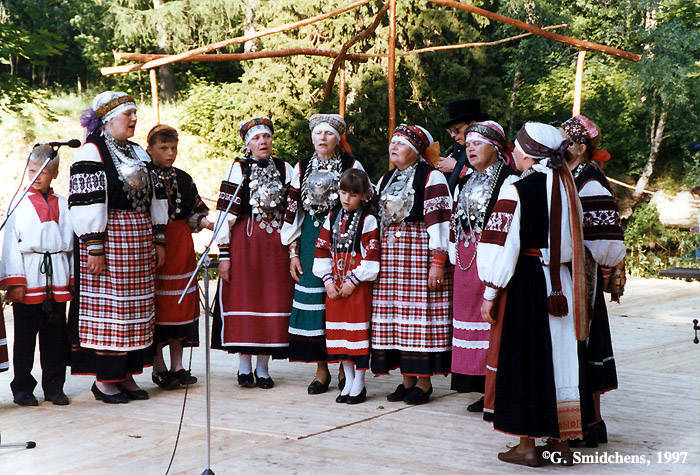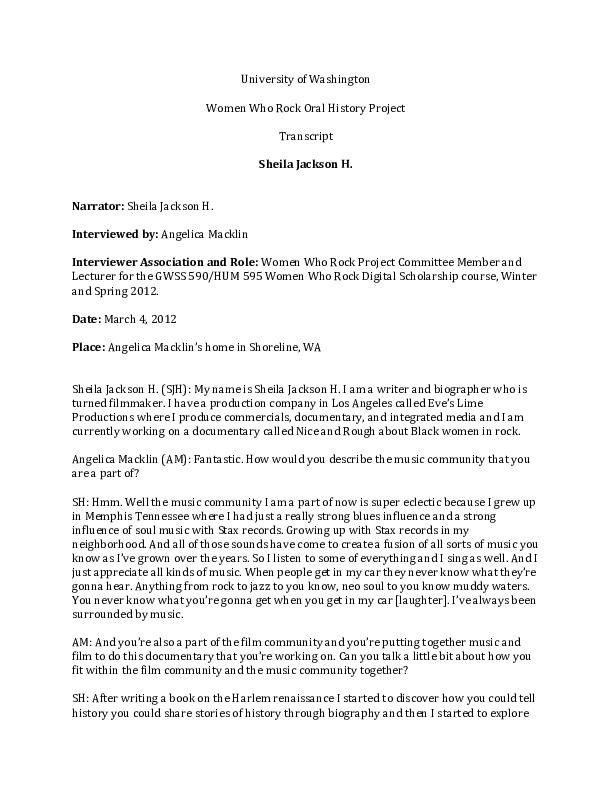Symphony Heard Around the World
Curated by Anonymous
Introduction:
Whether it be a roaring drum that fills the silence with applauds and joy, or the soft lullabies that one would sing to swiftly put their baby to sleep. Music has had a long history in teaching, emotionally guiding, and ultimately supporting us as people and individuals. Throughout the years music has consistently proved to be one of the many catalysts to further feminist ideals, acting as one of the many instruments in the symphony that is the feminist movement. Spreading further and further around the world as time goes on.
The first two artifacts exhibited are ‘Women’s Rights’ by Marion B. Wackford and Hanford M.C written in 1912 and ‘Vote for Women: International Suffragists song” written in 1916. Both of these pieces highlight the inequality between genders due to the inability for women to be allowed to vote. ‘Women’s Rights’ focuses on calling for change within voting policies while ‘Vote for Women: International Suffragists song” focused on empowering women to make a change within society. The music gave life to the realization that women's right to vote was the only change that would allow the world to shift towards a brighter future.
The next one we would like to point out to you would be 'She's good enough to be your baby's mother and she's good enough to vote with you' by Bryan Alfred, Jerome H. Remick & co, and Paley Herman. Originally made in 1916, the song was made to explain the dangers that an only male led society has done to the world stating, "man plunged the world into war and sadness" and "no man is greater than his mother". All of which gave context to the great idea that both genders are required to counterbalance each other and form true equality. Although the song focuses specifically on the aspect of giving women the right to vote, the overarching idea calls for society to change and adapt to a world where everyone is found on the same grounds.
Following that is an artifact called 'Seto,a folk group from southeastern Estonia, at the viru Saru International Folk Festival in Estat Lahemaa, an Estonian national park'. A photograph taken by Guntis Smidchens in 1997. The image is that of an all-women folk group. Although it may be hard to grasp the deeper context from the image, it's a prime example of how music was used to convey lessons, stories, and cultures. Moreover, the significance of it being strictly a women group backs the idea that women often had to do music related labors to it being viewed as a feminine action. Furthermore, the fact that they are singing what they want as this specific group is empowering and acts as a means of fighting the norms that forced them in confinding to gender stereotypes.
The fifth artifact would then bring up 'Sheila Jackson H. interview'. Conducted by Angelica Macklin who interviewed Sheila Jackson H. in 2012. The interview found itself wanting to explain the missing and often silenced time where various movements were overlooked such as defining the 'Black Panther movement' as being good or bad. Which is easily good and significant due to its ability to detail the empowerment of women in movements success and systematic function in the grand scheme of a movement, such as the feminist movement.
As we further our endeavors in understanding the influence music has had on the feminist movement we would like to bring to your attention 'Sound Waves of Feminism: The Women's Music Movement' by Washington, D.C Library of Congress who interviewed Bonnie Morris in 2017. During the interview, Moris mentions Music used by all cultures by women, conveying the emotions and ideals of the time. The songs define various facets of inequality women have been through and reflection of techniques exploited to deal with matters internally and externally. A song about prostitution is a key example of how society, especially men, viewed women and is a clear reflection of the patriarchy dehumanizing others and devaluing others in effort to form barriers between the races, genders, etc.
As we make our way to the end of our exhibit, we slowly get closer to the current day era. we will show you 'Tremenda Diosa Flyer' by Angelica Mendoza. The flyer was created to promote a hybrid radio and music show which was created by women of color and for women of color in the Pacific NorthWest. It was vast and meant to help multiple cultures and women of color express themselves and further equality between the genders and various races. Made in 2019, it illustrates one of the main pushes regarding the movement of the time. That being, it perfectly reflected the struggle between not just the genders, but the difference the women's race may have in impacting their overall equality. Something addressed through this radio/music show. This is especially prevalent when you realize that the flyer includes English and Spanish, emphasizing the flyers desire to be viewed by a wider audience as a whole. Moreover, it was a source provided through the UWB campus library.
Ending the exhibit and connecting music to modern day, the article ‘Blacksound: How Blackface Shaped the Music Industry’ focuses on how much of today’s music industry has been influenced by blackface. To further encompass this idea, Matthew D. Morrison, an assistant professor at New York University, coined the term Blacksound. According to Morrison “Blacksound refers to the legacies, sounds, and movements of African bodies -both real and imagined- on which blackface performance and popular entertainment were based". The article highlights how many non-black communities have made a mockery of black culture, and profited off of it within the music industry, especially female artists.
Conclusion:
Music is and has been essential to establishing and upholding cultures throghout history. Hopefully through the exhibit, you were able to experience a little of the empowerment that many of the feminist movements used and carried to spread their ideas of equality. To understand how music, like a symphony, is all about togetherness and teamwork. Regardless of culture or where you come from, music has influenced you and the environment you're in.
Artifact Citation:
Feminisms, Black. “Blacksound: How Blackface Shaped the U.S. Music Industry.” Blackfeminisms.com, 1 Sept. 2022, https://blackfeminisms.com/blacksound/.
Library Of Congress. Soundwaves of Feminism: The Women's Music Movement. Washington, D.C.: Library of Congress, -03-08, 2017. Video. Retrieved from the Library of Congress, <www.loc.gov/item/2021690438/>.
Macklin, Angelica. “Sheila Jackson H. Interview Transcript.” Digitalcollections.lib.washington.edu, Macklin, Angelica, 2012, https://digitalcollections.lib.washington.edu/digital/collection/wwr/id/397/rec/13.
Mendoza, Angelica. “Tremenda Diosa Flyer.” cdm16786.Contentdm.oclc.org, Mendoza, Angelica, 2019. https://cdm16786.contentdm.oclc.org/digital/collection/p16786coll12/id/727/rec/6.
Paley, Herman, and Alfred Bryan. She's Good Enough to Be Your Baby's Mother and She. Jerome H. Remick & Co., New York, 1916. Notated Music. Retrieved from the Library of Congress, <www.loc.gov/item/ihas.100008305/>.
Smidchens, Guntis. “‘Seto," A Folk Group from Southeastern Estonia, at the Viru Saru International Folk Festival in ‘Estat Lahemaa," an Estonian National Park.” cdm16786.Contentdm.oclc.org, Smidchens, Guntis, 1997, https://cdm16786.contentdm.oclc.org/digital/collection/eurasia/id/4451/rec/44.
Votes for Women: International Suffragists' Song. comp by Markel, Ed.Oser, Lyricist [Des Moines, Ia.: Ed. Markel, ©, 1916] Notated Music. Retrieved from the Library of Congress, <www.loc.gov/item/2017562204/>.
Wackford, Marion B., Lyricist. Women's Rights. comp by Hanford, M. C.Oser [Washington, D.C.: H. Kirkus Dugdale Co. Inc., ©, 1912] Notated Music. Retrieved from the Library of Congress, <www.loc.gov/item/2017562343/>.





